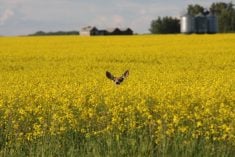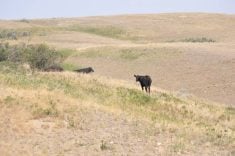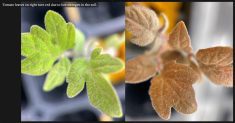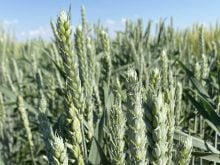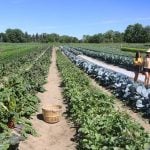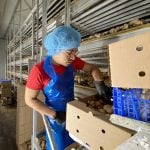Ken Miller is the only seed grower in Canada who produces AC Saltlander but he may not be the only one much longer.
“It controls and reduces the size of the saline area,” said Miller, who owns Miller Seeds in Milk River, Alta. “It can turn a very nasty problem area into an asset.”
AC Saltlander, which was developed at the Semiarid Prairie Agricultural Research Centre in Swift Current, Sask., improves the productivity of saline soils by using up water in the soil.
Read Also
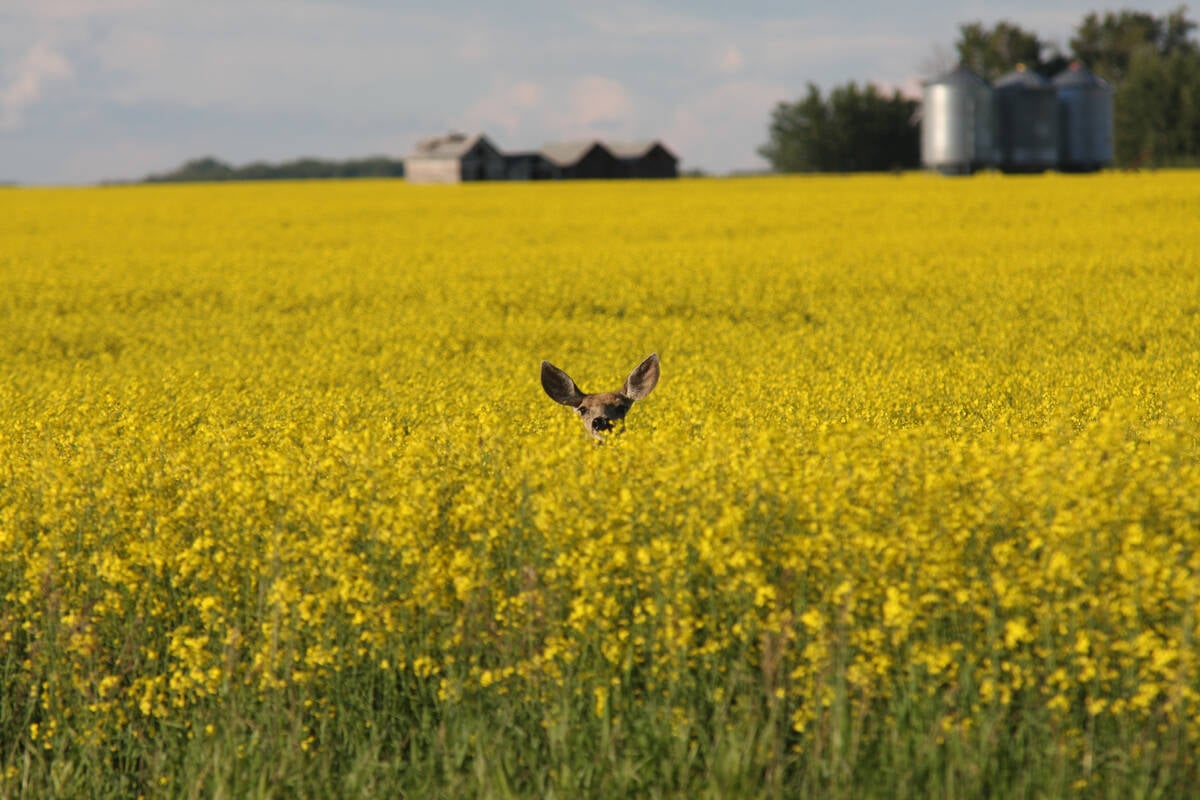
Drones now used to assess wildlife crop damage in Saskatchewan
Wildlife damage in Saskatchewan crops is now assessed by drones and artificial intelligence.
Harold Steppuhn, a researcher at SPARC, has proven that AC Saltlander can suppress the spread of foxtail barley on saline pasture and hay land.
“We think it will be used widely by grain farmers, more than cattle farmers,” he said.
Once established on saline areas, AC Saltlander consumes water, which causes salts to migrate downward in the soil profile. The salt concentration near the surface is reduced, which allows producers to grow crops on the formerly saline soil.
Miller is working with a U.S. distributor where producers with salinity problems are eager to try the green wheatgrass, Steppuhn said.
“The interest is high as a reclamation grass,” he said. “Right now, we’re in application for a plant variety protection certificate from the (United States Department of Agriculture.) As soon as that goes through, the seed companies have the authority (to sell it).”
In Canada, Viterra markets the AC Saltlander seed grown on Miller’s farm. The Canadian market is still small, as Miller provides Viterra with 25,000 pounds of seed annually.
“A few farmers have done it and the neighbours are watching the first guys,” Miller said.
But with millions of saline acres in Canada and the U.S., Steppuhn believes producers on both sides of the border will soon latch onto the financial benefits of reclamation and improved production.
“Just because you don’t see the salts doesn’t mean they’re not there…. There’s far more acreage in the hidden, the invisible salinity, than we have at the top. So we have a lot of problems because this is eating into your profit.”
———
access=subscriber section=news, crops, none



